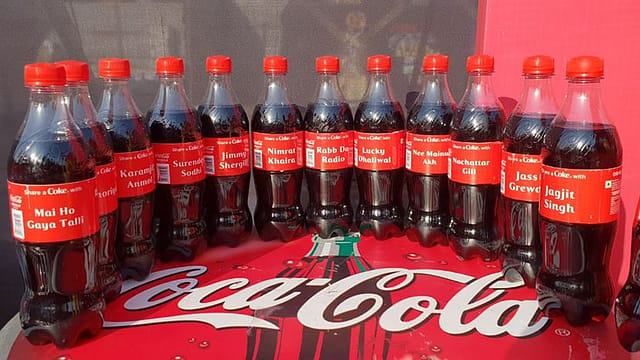Coke’s caffeine kick
ADVERTISEMENT

From ice-cold fizzy pop to piping hot coffee—that’s the journey the Atlanta-based soda company, the iconic Coca-Cola brand, has travelled to remain profitable and relevant in the new age. It has already been on a shopping spree for a while now, adding coconut water, tea and—if media reports are to be believed—even a marijuana-infused drink to its kitty.
Hence, it hardly came as a surprise when the company announced that it had acquired the U.K.’s biggest coffee shop player Costa Coffee for £3.9 billion. Media reports have also been speculating that the soft drink giant is also eyeing health supplement drinks Horlicks and Complan.
Since 1886, the fizzy black soda has been the driving force of the company and accounts for almost three-quarters of sales, much higher than its arch-rival PepsiCo. But with the consumers opting for healthier options and consumption patterns undergoing a change, companies have been forced to diversify their product portfolio.
December 2025
The annual Fortune 500 India list, the definitive compendium of corporate performance, is out. This year, the cumulative revenue of the Fortune 500 India companies has breached $2 trillion for the first time. Plus, find out which are the Best B-schools in India.
“We’re continuing to evolve as a total beverage company. This means we sell Coke, of course, but also so much more,” said James Robert B. Quincey, Coca-Cola President and CEO, in a statement after reaching an agreement to acquire Costa Coffee.
Over the years, the sales of carbonated drinks have declined, especially in developed markets like the U.S., and even in markets like India. According to a report by Euromonitor, carbonates will grow at a CAGR of 3.4% till 2022, as opposed to juices at 8%.
“Coca-Cola is on a buying spree for two main reasons: It is looking to diversify its brand and investment portfolio from the traditional Coke heavy-asset base which is seeing sluggish demand for its sugar-heavy soda drink. This is primarily to de-risk itself as part of business sustainability action steps if you look at its recent investment in Costa Coffee and proposed buyout of malt-based drinks,” said Saurabh Uboweja, CEO, Brands of Desire, a management consulting firm. “At the same time, Coca-Cola is also looking to invest into and develop future blockbuster products. For example, it is in talks with Canada-based Aurora Cannabis to co-develop cannabis-infused drinks.”
Quincey notes that coffee is one of the fastest-growing beverage categories in the world, at 6% growth rate, with a ‘fragmented business’ as no single company has a strong foothold across the category. For him, the acquisition will allow Coca-Cola to add retail footprints, increase ready-to-drink beverage option and expand the fresh espresso system in immediate consumption and experience channels.
Well, it was not just coffee that the fizzy soda maker was willing to add to its kitty. Within weeks, The Economic Times reported that Coca-Cola was the frontrunner to buy the consumer brand portfolio of Kraft Heinz—which includes children’s milk drink Complan, Nycil talcum powder, and energy drink powder Glucon D—for around Rs 4,000-5,000 crore. Also, it was interested in GlaxoSmithKline Plc’s Indian malted milk drink company Horlicks Ltd, according to The Sunday Telegraph.
Interestingly, the health drinks market is seeing slowing growth rates and stiff competition. But this doesn’t seem to perturb the giant from eyeing this segment.
“For the group, it could mean a successful diversification even though malted drinks, as a category, are in the journey of monetisation right now. There hasn’t been any path-breaking product innovation in the last few decades. Coca-Cola could end up monetising the brand and its category for the next few years before reinvigorating it to something new,” Uboweja said.
But that may not be that simple. “Even today Coca-Cola already owns or licences close to 500 brands globally and has always been a house of brands but its iconic product, Coke, has dwarfed other brands," said Baqar Iftikhar Naqvi, business director, Wazir Advisors, a retail consultancy. “Coca-Cola will have to maintain the core identity of these brands even after mergers,” he said adding that each brands under consideration was in a different vertical, and “dynamics and drivers of each business are very different. So the critical question will be how, what, and where do you leverage?”
For now, many analysts and experts believe that the shopping spree will continue for Coca-Cola. The company increasingly wants to have anchor products other than Coke. Only time will tell how much it can achieve, as it will not only have to compete with existing food giants, but also have to carve out an identity of its own.
